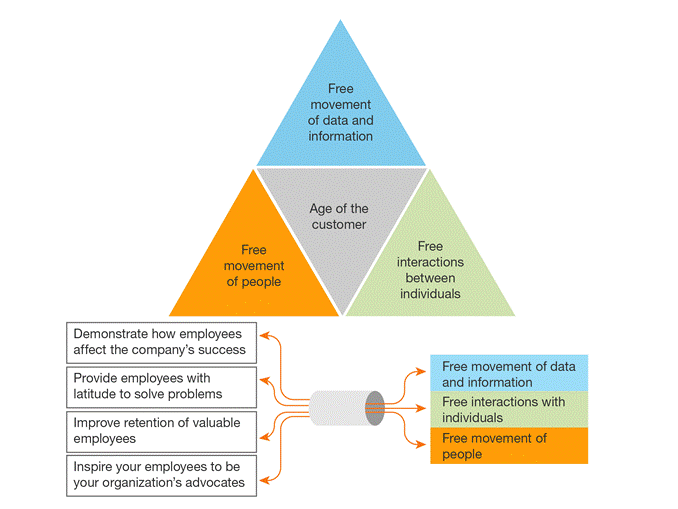You Need Great Employee Experiences To Create Great Customer Experiences
It's easy to get swept up in the power of the digital age, where smart mobile devices and cloud services open the door for new and exciting ways to engage customers. We think a lot about how these technologies will create enticing customer experiences (CX), making these digital touchpoints the face of the brand. I admit, as a technology fan, I'm enamored with this idea. But I'm also someone who thinks a lot about technology and the workforce, so I was equally animated by a conversation I recently had with the head of a CX consultancy. He warned that businesses risk over rotating on technology, viewing their people as receding in importance in delivering satisfactory customer experiences. He went on to say that businesses that make this make do so at their own peril. I agree.
More than three quarters of the information workforce — those using a computing device (e.g. PC, smartphone, tablet) at least one hour per day — interact with at least one customer as a routine part of their job. Over half of the workforce regularly interact with customers, partners, and customers. Are CX professionals thinking about the experiences these employees need as they think about customer needs? And — close to my heart as a tech guy — have they thought about what these neat digital tools can do for their employees, as they have about digital's effect on customers?
Previously, we established that information workers require three broad freedoms: freedom to access and use information; freedom to interact with others as necessary; freedom to move when needed. In our new report, How To Build A Technology Plan That Sustains Employee Engagement, we examine how employee satisfaction with the technologies that underlie these freedoms relates to positive employee behaviors. What this analysis netted us is the interesting picture you see below:

Our data analysis shows satisfaction with technologies that support data access, interactions and movement correlates with:
- Independent problem solving. Employees able to identify and address client issues on their own narrow the time to resolution. And this ensures nagging customer issues don't metastsize into full-blown customer experience breakdowns.
- Awareness of how employee actions relation to the business's success. If employees feel that there is a purpose to their work, then they are more inclined to take it seriously. Furthermore, they're more likely to invest their energy in fixing issues as they arise.
- Employee retention. Turnover kills customer experience. Holding on to workers ensures continuity in customer experience and the opportunity to continue to build on improvements. It also ensures that the company can maintain relationships workers form with their customers, business partners, and colleagues.
- Employees' willingness to advocate for the organization. Workers can help draw in new customers through recommendations to family and friends. They can also identify qualified prospective employees when they recommend the company as an employer to that same social circle.
All of these look like great qualities to have in your workforce, right? Well, they don't happen if you don't link employee intention (get data, work with people, change context) with enabling tools (PCs, smartphones, tablets, applications) in a set of journeys that results in each worker meeting their personal goals. This argues for customer experience techniques being brought into the technology management organization. And it means that CX leaders and their technologist counterparts need to work together not only on creating compelling customer experiences, but also productive employee experiences that ensure workers can meet customer expectations.
This is an ongoing conversation, so I'm interested in hearing your thoughts. What do you think?